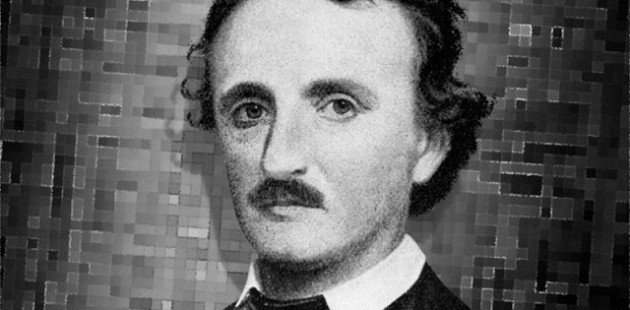
Modern Computer Solves Poe’s Last Inscrutable Puzzle
Murray Ellison | April 13, 2018
Excerpts from Murray’s VCU Master of Arts Thesis on Poe and Science © 2015.
Poe published several columns on cryptography entitled “A Few Words on Secret Writing.” He explains that advanced puzzles, where the only secret to the code is “locked in the creator’s mind can be very difficult or nearly impossible to solve.” Poe mentions that the acclaimed sixteenth-century English philosopher and scientist Francis Bacon “very properly defined three essentials in secret correspondence.” Bacon’s first essential is that the cipher should “elude suspicion of being a cipher.” Secondly, that its alphabet should be so simple “as to demand but little time in the construction of the epistle.” Thirdly, that it should be “absolutely insoluble without the key.” Poe adds the fourth essential: “With the key, it is promptly and certainly decipherable” (147), perhaps, because he felt that he needed to solve the submitted puzzles in time to have them published in the upcoming issues of his journal articles. He quotes from a letter from a reader who has never been authenticated, named “W.B. Tyler,” who praises Poe’s correct solution to Dr. Charles J. Frailey’s puzzles. This mysterious letter pronounces: “You have exhibited a power of analytical and synthetical reasoning I have never seen equaled… I crown you the king of secret readers” (141). “Tyler’s” letter also proposes two additional challenging ciphers—which, according to Rosenheim, were among the only “legitimate” ones submitted that Poe was never able to solve” (39).
Poe explained in his December 1841 Graham’s article that Tyler’s cipher was indecipherable because it was improperly constructed. Rosenheim supports Poe’s assertion by stating that it was difficult to solve because spaces and punctuation were omitted between the letters and that it was written backward (38). Poe also states that he did not work at Tyler’s second challenge because the many ciphers being submitted to him by his readers “were beginning to take too much of his time” (149). In other words, it did not meet Poe’s fourth condition for legitimate puzzles. Rosenheim initially commented that Tyler’s longer second cipher “remains unsolved—and is likely to stay so for some time.” He wrote that in order “to solve that cipher, one needs to identify up to 156 characters…using six alphabets” (39).
However, after publishing this statement, Rosenheim had reservations about his initial conclusions and decided to determine whether twentieth-century cryptographers could unlock the second and most difficult unsolved puzzle. Rosenheim’s subsequent contest in early 2000, which he called, “The Edgar Allan Poe Cryptographic Challenge, “was supported by a $2500 prize from Williams College for anyone who could solve Tyler’s ciphers. On October 31, 2000, Newswise, an academic science news service of Williams College reported that both ciphers had been solved by a software programmer living in Toronto, named Gil Bronza. According to Rosenheim, it turned out that the second cipher was a polyalphabetic substitution cipher and contained “over two dozen mistakes.” It is ironic that it took a modern computer analyst to decipher the only two unsolved ciphers of the hundreds that readers submitted to Poe. I have been informed by our present-day Curator, Chris Semtner, that Gil Bronza visited the Poe Museum after winning the prize money. Despite Poe’s inability to solve a puzzle proposed by Tyler, or possibly himself, Rosenheim concludes that Poe was one of the most skilled cryptologists in history (Cryptographic Imagination 24). He points out that Poe’s columns on secret codes were also the first ones to be featured in popular newspapers. They generated a continued interest in this topic in and after Poe’s lifetime. Poe’s cipher format has also been proliferated in the present era in newspaper columns like Poe’s called “The Puzzle of the Day.” Poe next demonstrates that his interests in science are diverse, ranging from technical topics about chess and computers and from discussions about pseudo-science to unlocking solutions to deeply hidden puzzles and mysteries.
Selected Sources
Poe, Edgar Allan. The Complete Works of Edgar Allan Poe Volume XIV: Essays and Miscellaneous. Ed. Harrison, James A. New York: T. Crowell, 1902.
Rosenheim, Shawn. The Cryptographic Imagination: Secret Writing from Edgar Allan Poe to the Internet. Baltimore: Johns Hopkins Press, 1997.

 > Donate
> Donate
